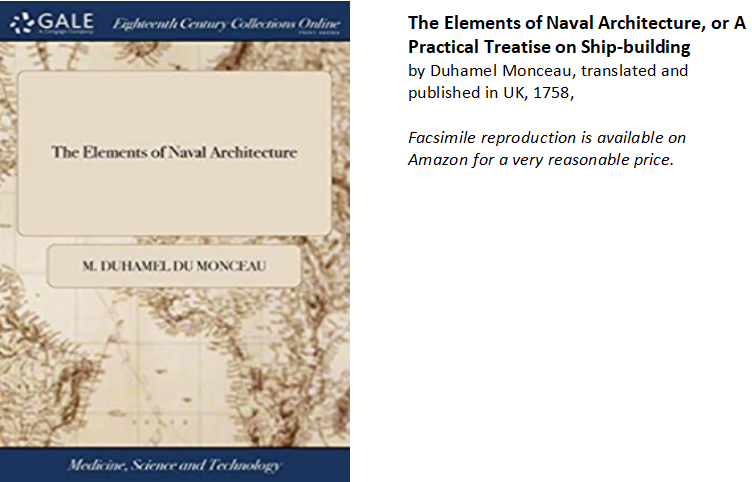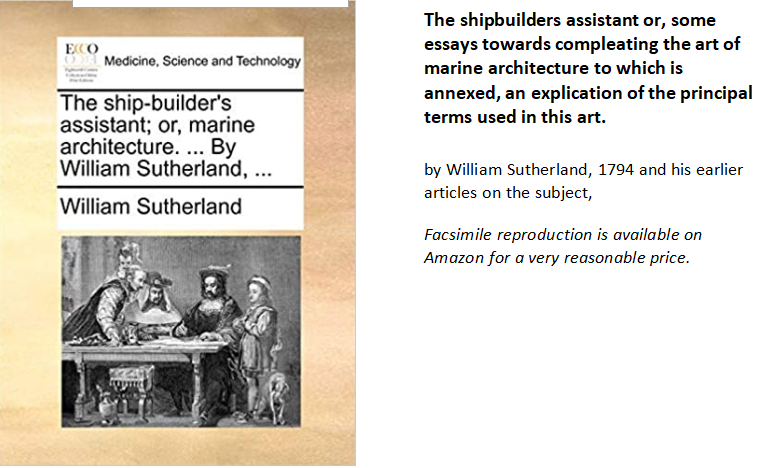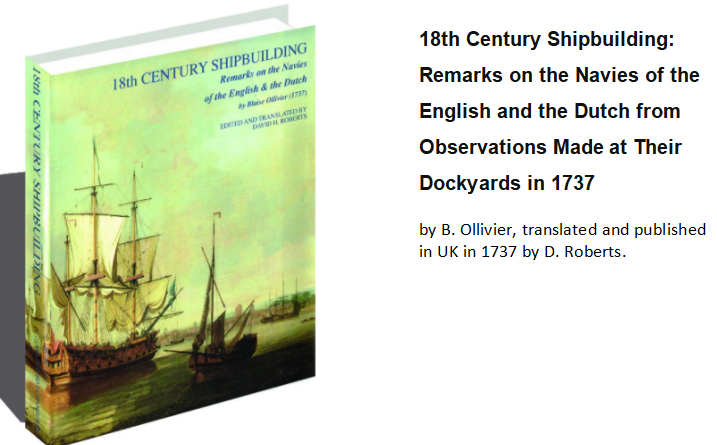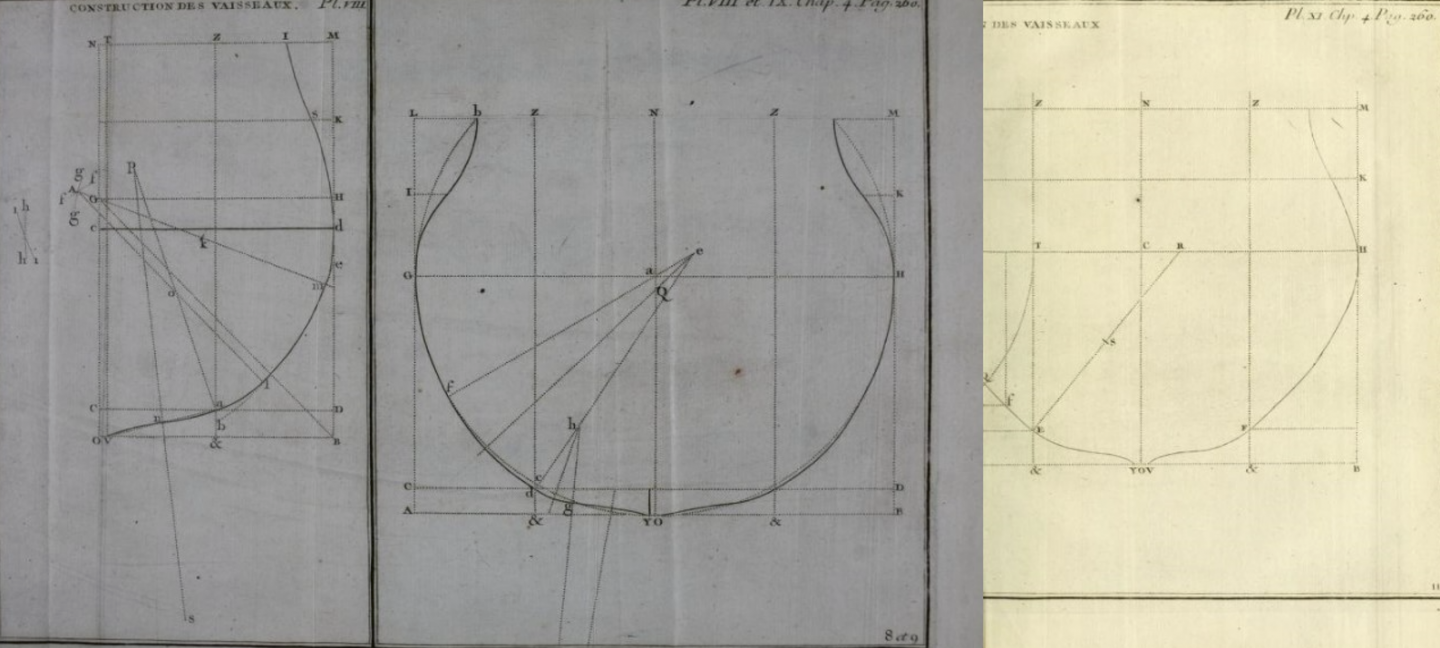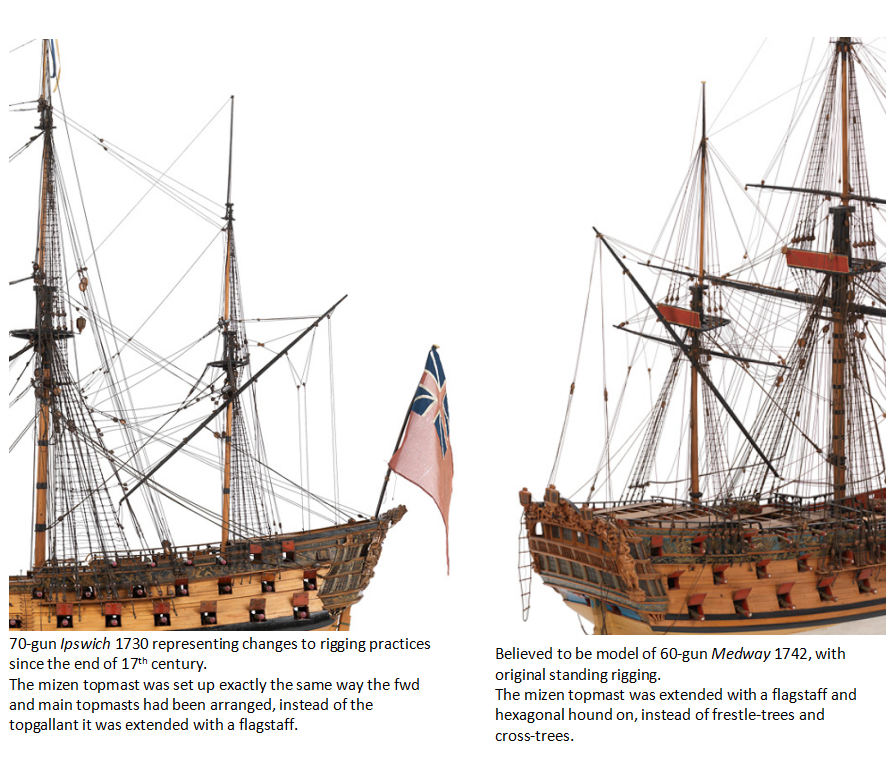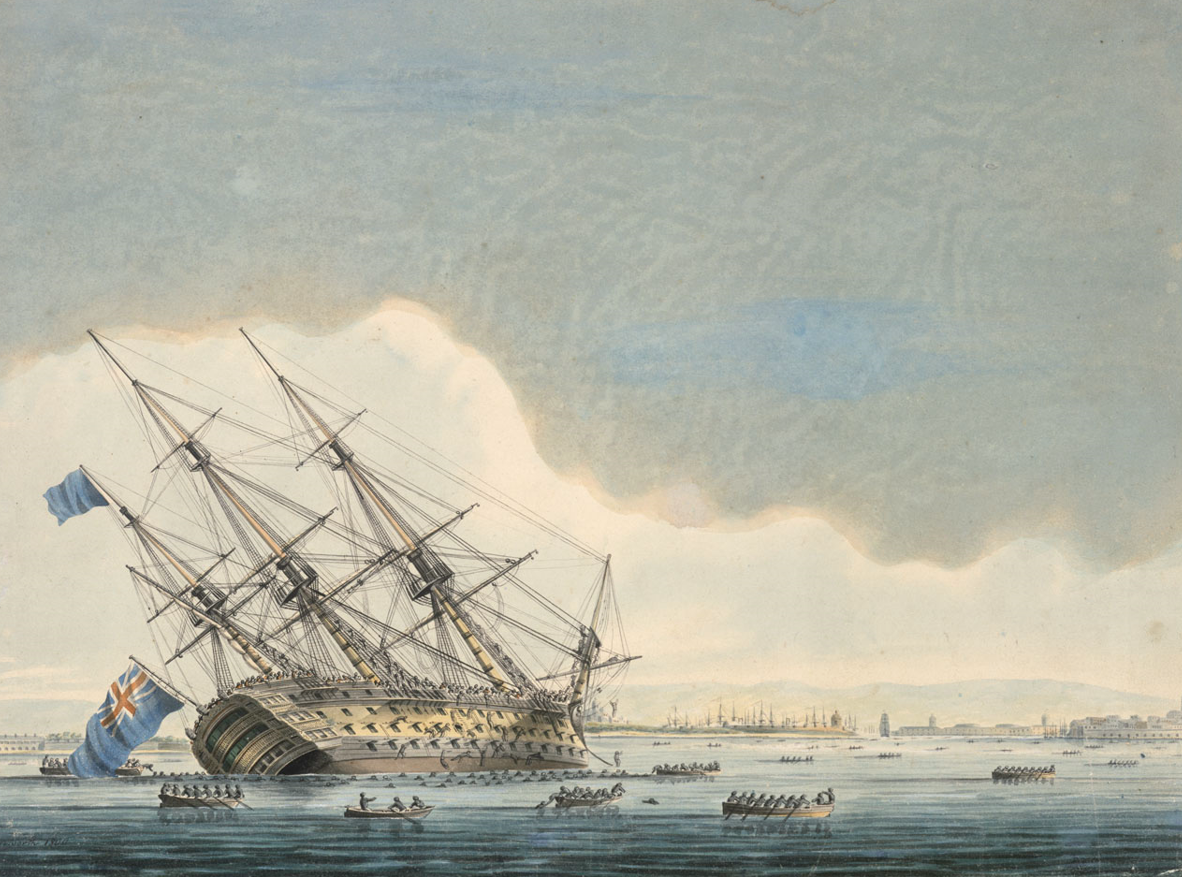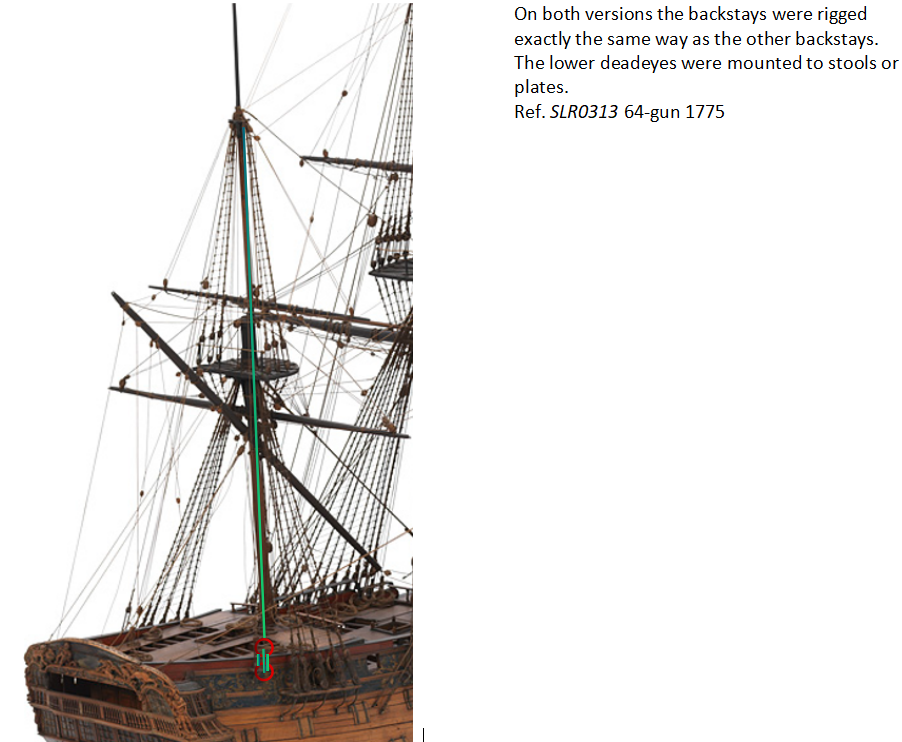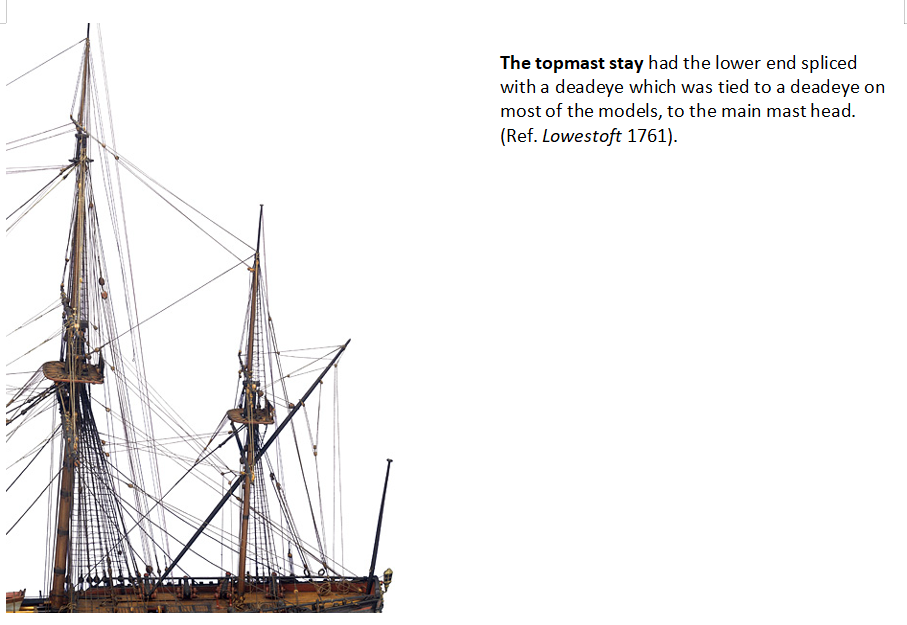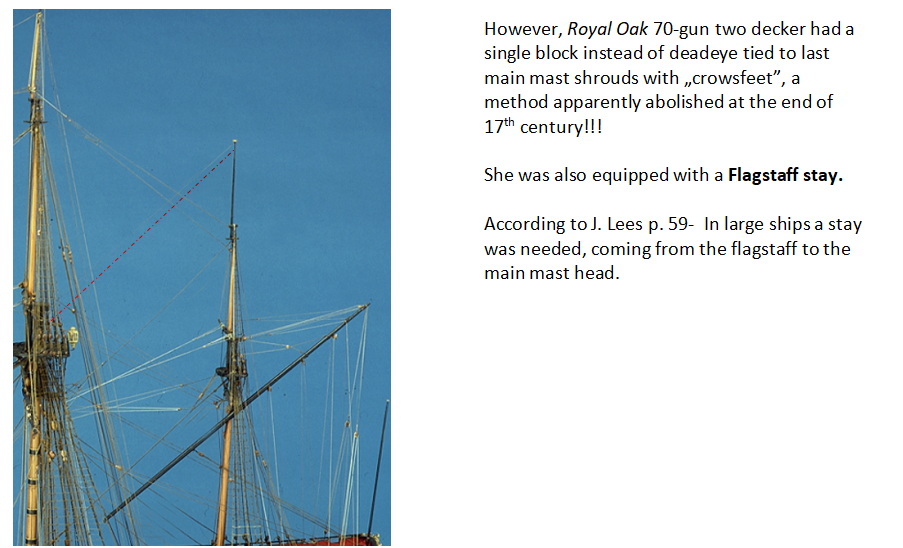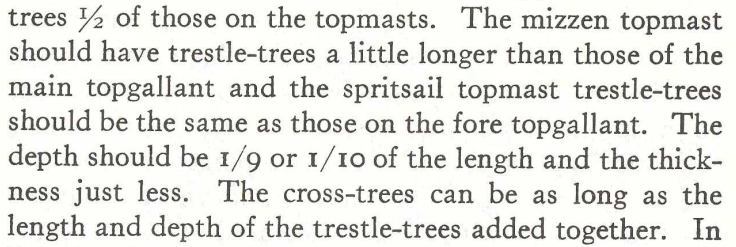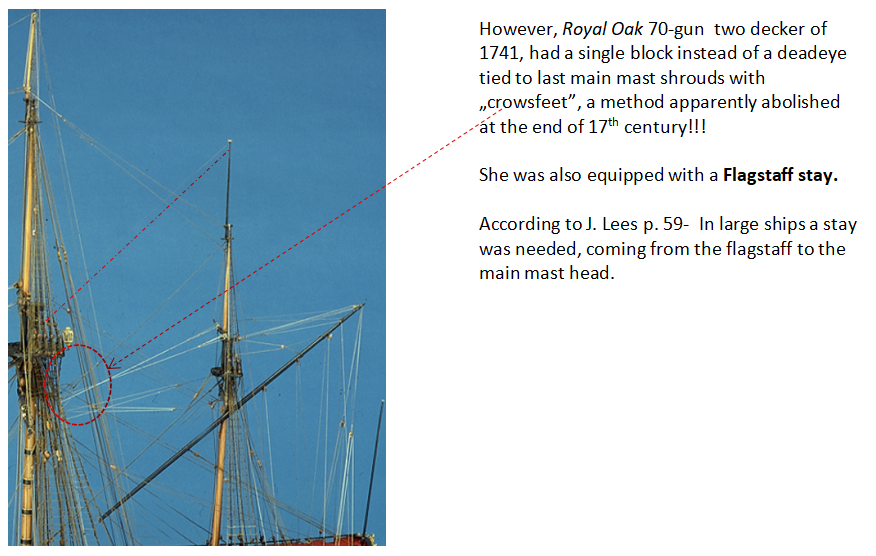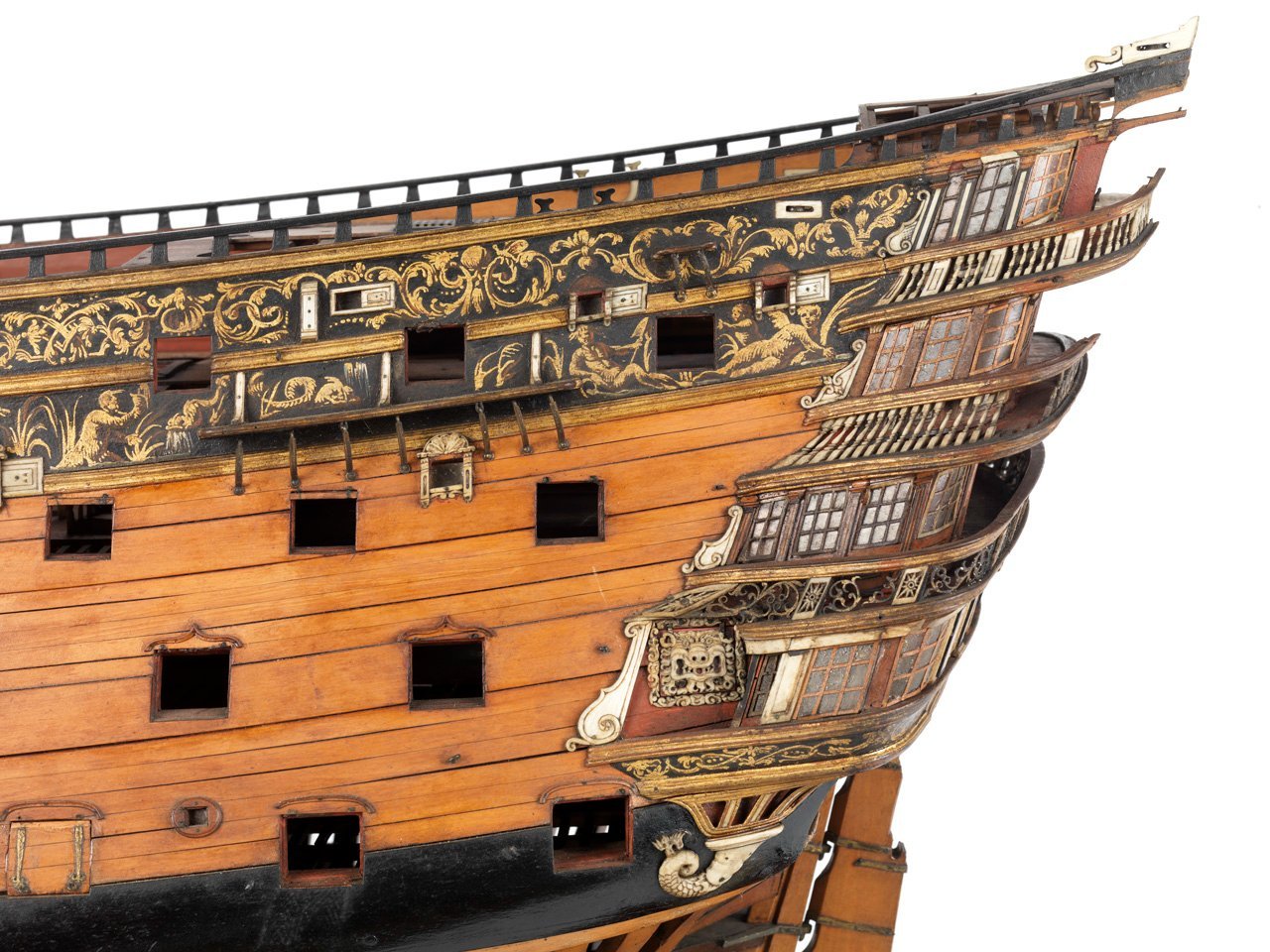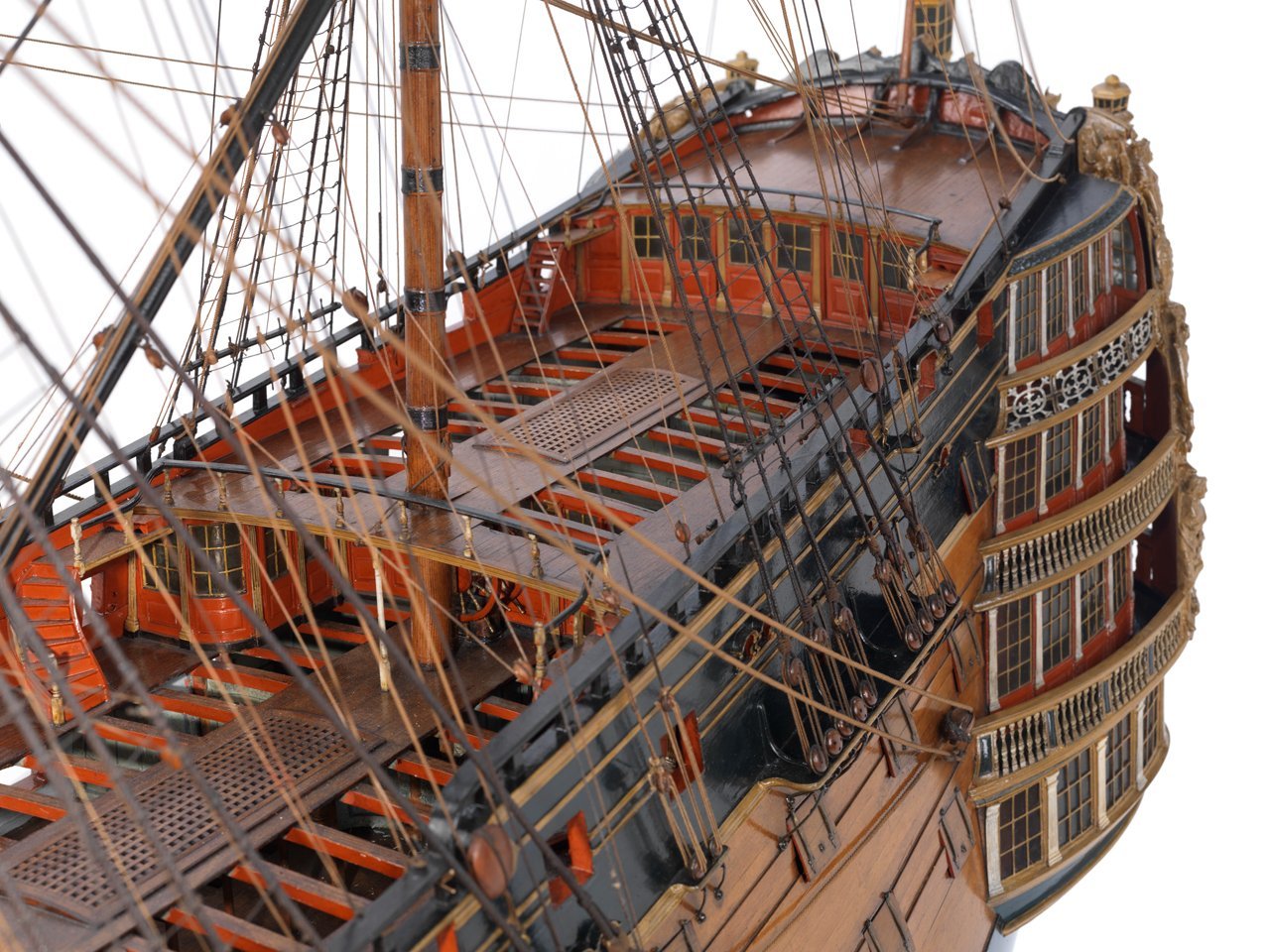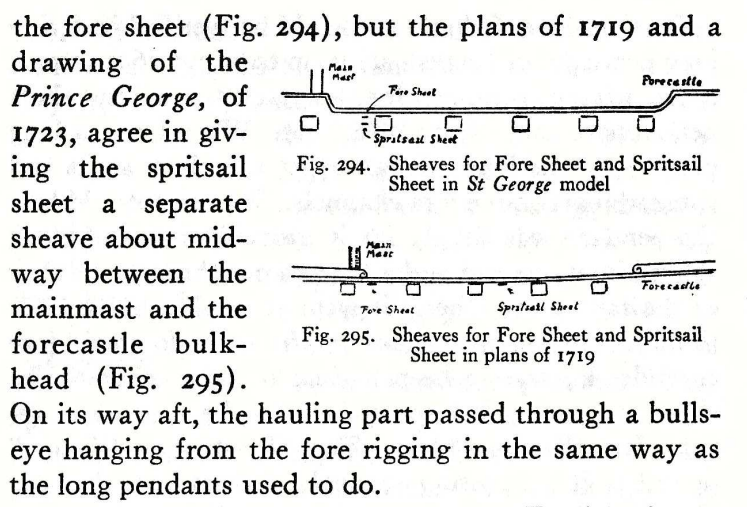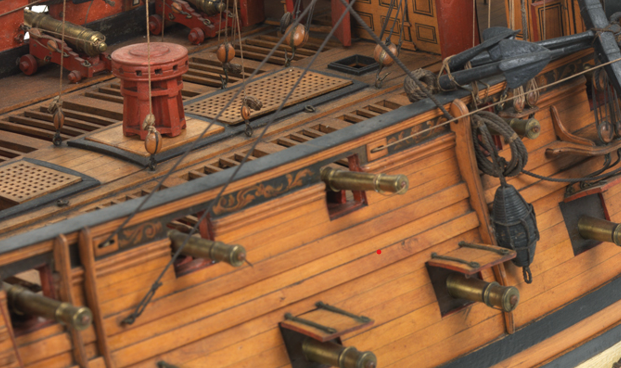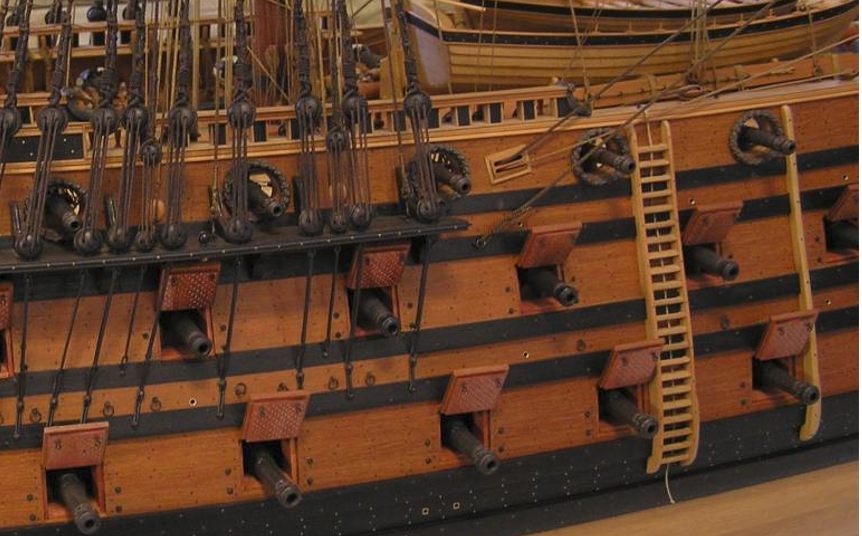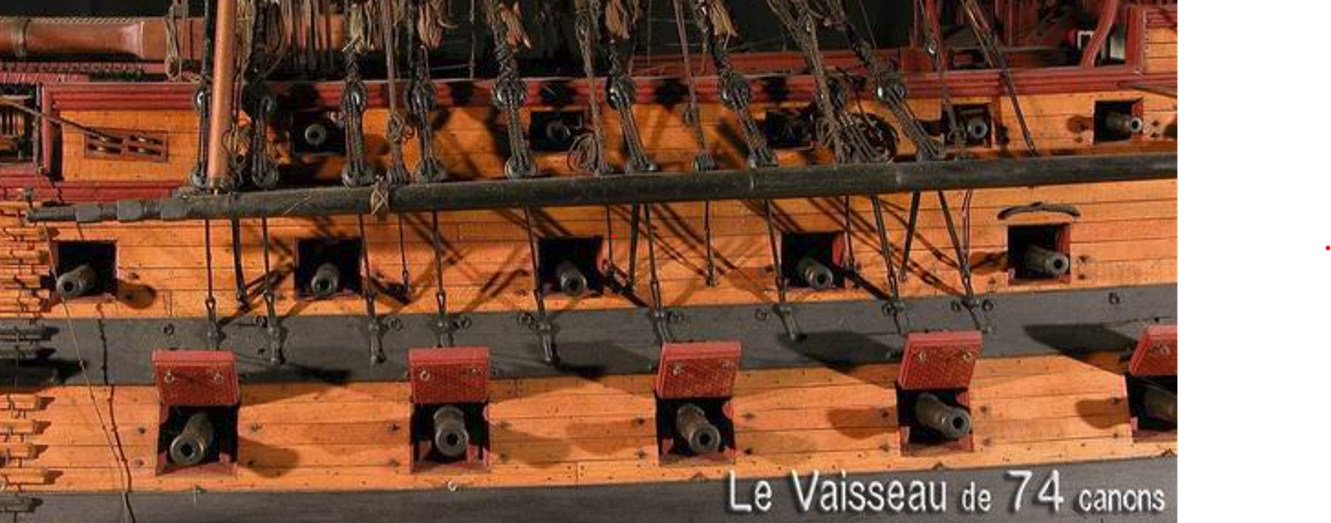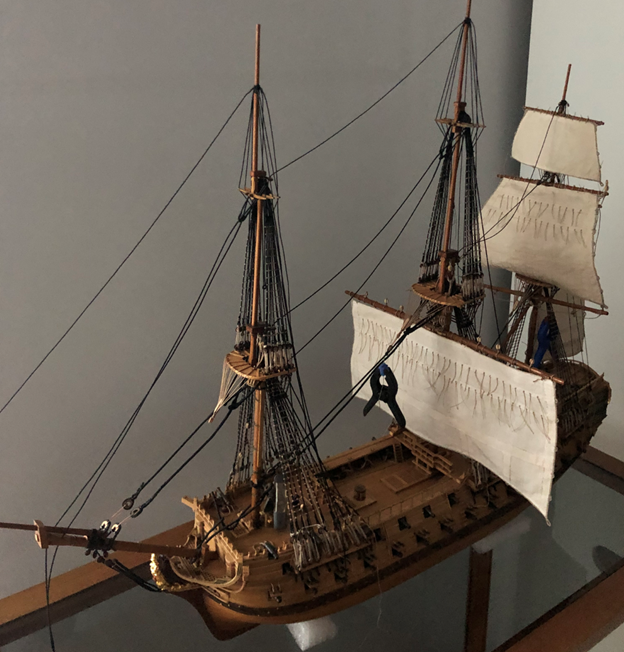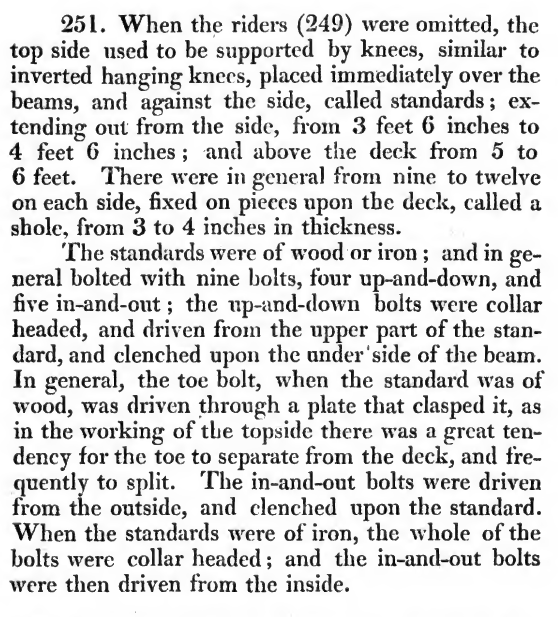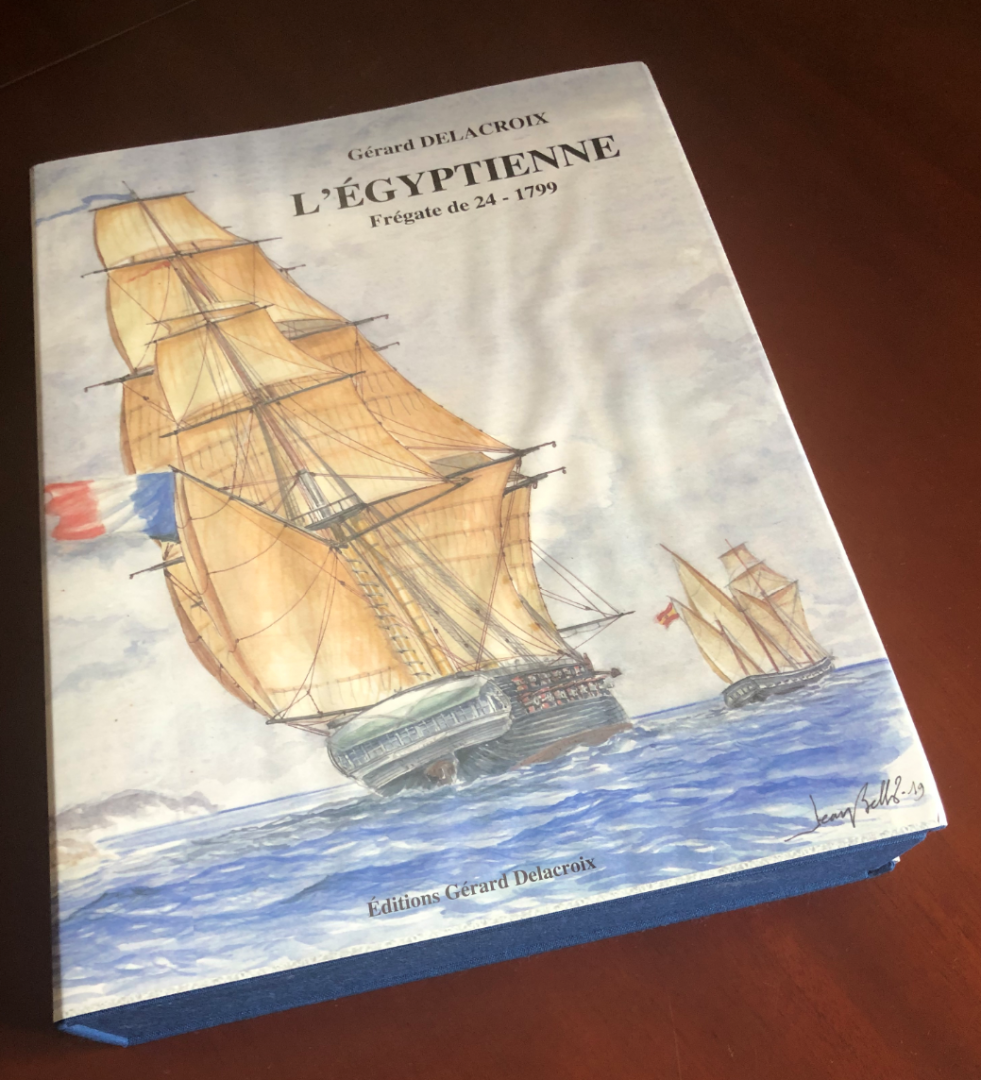
JANRUS
Members-
Posts
11 -
Joined
-
Last visited
Content Type
Profiles
Forums
Gallery
Events
Everything posted by JANRUS
-
Hello Mark, 1. In regards to the mizen backstays: indeed there was only one rope rigged to each side of the ship at this time. 2. In regards to your later posts: Naval architecture in the second half of 18th century was already well established discipline based on scientific principles, as the concept of the ship had evolved from a building strong enough to float in all seas and seasons to a moving fortress that required a floating caissons below and a propulsion above. These ships were engineering masterpieces, which sailed swiftly with and against the wind, having thick sidewalls protecting seamen against cannon balls. There were contemporary works available to D. Steel, like: or Also earlier works , just to mention „Architectura Navalis” (Ulm 1620) by Futtenbach and treatises of Pierre Fournier, Dutch construction engineers and Spanish shipbuilders. The top three may have an answer to your question regarding workflow in drawing implements-scales-projection-sections-development-drawing estimates- molding room..... and the role of the Master Draftsman. Thanks Best Regards, JR
-
Hello Mark, Just reviewed my notes, and from the drawings, existing models in various collections and treatises there seem to be two ways the mizzen top mast rigging has been arranged in those days. See below: I chose these two models because according to naval historians the Ipswich along with the Medway, is one of the most useful rigged models of the period as major part of it is contemporary with the ship. Here is also the lithograph of the Royal George of 1757, from the moment she sunk in 1782 at Spithead, with visible mizzenmast. Other popular models like Victory (1737), Centurion (1732), Yarmouth (1742), Royal Oak (1741), SLR0313 64-gun from 1775, were fitted in the same way. Medway and Centurion (1732) had the topmast extended with flagstaff and hexagonal hounds, similar to French 74-gun ships, however, on the French ships the topmast pole served as a topgallant mast, when a topgallant sail was hoisted. In his treatise R.C. Anderson was referring to the 1st method represented by the Ipswich, providing the measurements of the trestle-trees and cross-trees on the p. 50-51: Hopefully it did help you a little bit. Thanks My Best Regards, JR
-
Hello Mark, just came across your recent posts - you're just a perfectionist, and love the fact you are taking time to built this masterpiece by Anobium Punctatum and all of us following your log. You can always count on our support 💪. In regards to your quest regarding mizzen backstay's stools, there are quiet few strong arguments Bellona had them installed at the time of launching: 1. From R.C Anderson "Rigging of the ships in the days of the spritsail topmast, 1600-1720", p. 74 - " The mizzen topmast began to have standing backstays in 1685 on all 3-Rates. In 1717 they had stools just abaft the after end of the mizzen channels and as high up as possible." 2. Quiet few ship models on NMM in Greenwich from that period are showing this fixture, ex.: - SLR0479 - 50 gun of around 1747, - SLR0422 - 100 gun of around 1725, - HMS "Victory" of 1737 had them too - important argument as this model was used for educational purpose in the British Naval Academy, - HMS "Centurion" of 1732 - very interesting fact about this particular model is that it was built in 1747 by master shipwright Benjamin Slade, the uncle of Sir Thomas Slade, the designer and builder of Bellona. 3. All French ships had them on at this period already - Britons copied a quiet few French features/solutions to their ship; all historians agree French led the way in the changes to sail ship's design and rigging. J. Boudriot classic vol.1-4 is very useful to understand those days of sail ship's. In regards to the spritsail and fore sheets: From R.C. Anderson again and on the 60-gun model of 1735 and on the French L'Ambitieux of 1692 (as the curiosity) or 74- It's a quiet challenging to find reliable sources for this period of Bellona history (her launching); the time after her rebuilt in 1780 is much better documented. That's why I started my researches from R.C Anderson treatise and models of the first half of 18th century to better understand the evolution of ship's rigging. Some historians claim Britons had things standardized, however, models show each ship had its own special features. Darcy Lever "The Young Sea Officer's Sheet Anchor" of 1808, describes variable methods of rigging existing in the fleet at his period. Therefore it will be your decision how to approach any challenge you may encounter, without jeopardizing historical facts. My Best Regards, JR
-
Hello Mark, My apology for not responding to you immediately, due to time constrains I am not very often logging in on the forum. A while ago I inherited “Bellona” ship’s model built based on Corel Plans in 1:100 of metric scale. She was still under construction with the hull almost completed (the builder used his own materials; however all fittings seem to be purchased from Corel), masts and rigging were not installed. She landed on the shelf at our home library, but my intention was always to finish it completely by adding sails as well, which required from me to do some research beyond the plans. I’ve received all Corel drawings, unfortunately no instruction manual. The plans describe a model after the ship’s refit in 1780 with some alternative fittings related to the original design of 1857. To begin somehow, I collected a small library of various books and reprints: B. Lavery’s - “Bellona - anatomy of the ship” from where I retrieved dimensions of masts and yards and verified them with Corel drawings. Sails measurements were useful too. The monography doesn’t provide sufficient details on rigging, therefore I’ve reached for J. Lees’ classic, but since he is quiet often referring to Darcy’s “A Young Sea Officer’s sheet Anchor”, I did buy this book too, plus, reprints of Steel (Goodchild edition from 2000) to take all ropes and blocks measurements and sails details, then Longridge “The Anatomy of Nelson Ships”, and R.H. Anderson “The Rigging of the Ships in the Days of the Spritsail Topmast 1600-1720”. J. Harland’s “The Seamanship in The Age of Sail” was invaluable for me to understand how these ships were managed, and G. Biddlecombe’s - “The Art of Rigging” was indispensable for understanding of terms, phrases and his progressive rigging method. Since the history of the three major sea powers French, Spanish and British intertwined strongly during this period, I thought it would be beneficial to find out how they were competing when comes to developing of the ships and technology: J. Boudriot (Le vaisseau de 74 canons, first 3 parts), Spanish - Architectura Naval Antigua y Moderna , Marquardt’s and Zu Montfeld’s etc…. Also this forum is an excellent source of the information – with a good number of modelers representing incredible knowledge on the matter – you guys rock 😊 especially Druxey, Greg H. (dmv), Ed, Gaetan, Chuck, Garry, Amaro’s build of Montanes (would love to hear more from him about the resources, not a problem if it’s in Spanish) and obviously D. Antscherl’s books. My apology to those I didn’t mention here. I am positive Mark yours model after finishing will become universally recognized. Not so far ago I went thru the log – HMS Pegasus by Blue Ensign where he made a good comparison of different sources when doing his rigging. Vadas log is useful too. I’m also checking on 5500.forumactif.org Coming back to the initial subject I must say Corel did a good research work on this part of the model. Rigging drawings are clear and as expected with details related to this scale, however some have no references to the sources I did mention above but determining exact dates for changes in the rigging of such ships is exceedingly difficult. Another challenge was to add to the existing structure missing belaying points. As Anderson mentioned – “Nine ropes out of ten have to be belayed somewhere and somehow on or near the bulwarks and rails. For this purpose, there were three devices different in details, but the same in principle, cleats, kevels, and belaying pins”. The picture below shows her present stage: Decided to go with dry trial of all elements, if satisfactory and historically correct will fix them permanently. Hopefully in the near future will be able to dedicate more time to this project. I would be more than happy to assist you with your plans. Thanks, and Best Regards, JR
-
DearMark, My utmost respect in regards to your building log, sir! Thus far your dermination, patience and shipwright skills has been very impressive. Love it. I believe that one of the factors the standard in question has not been initially installed on the stem (and did show up on later constructions) was the novelty of the 74's design for the British Navy, and perheps during ship's operation Admin. decided to add this detail as the safety reinforcement. J. Fincham in his "The Practice of ship-building" describes standards as follows: For some times already I've been studying various sources on "Bellona" initial rigging setup (1757) and found similar challenges you have with her structure. Best Regards, JR
-
Speedwell of 1752; a work in progress
JANRUS replied to druxey's topic in - Build logs for subjects built 1751 - 1800
Greg and David, you indeed did advance our hobby to a quite high degree. Many thanks for that, your books books and built logs are always a great pleasure for me to read, review and follow on. Best Regards and stay safe in present days. JR -
FUSION 360 PROBLEM
JANRUS replied to AON's topic in CAD and 3D Modelling/Drafting Plans with Software
Fusin 360 saves your files in two locations: primo - in the cloud and secundo - inside the sofware allowing you to work offline. On the Preferences you can decide for how long to retain them there. The other option would be to transer your sketch to drawing and save it in PDF format for example. You can go back to your sketch anytime and update it ( measurements ea.) on both - design and drawing. In regards to transferring older files, it's challenging indeed to get it without paying a fee. Cheers, JR -
Indeed great monograph created by G. Delacroix, strongly recommended. British were always trying to diminish "french influence" in their 18th and 19th century ship's construction, however evidences are very solid, ea. frigate "Pomone", based on the famous HMS Endymion and Severn class frigates were built and so on... Good reading and excellent addition to my private library. Best Regards, JR
-
HMS Enterprise by AlexBaranov - 1:36
JANRUS replied to AlexBaranov's topic in - Build logs for subjects built 1751 - 1800
Dear Alex, in the documents from the time the ship's name was spelled "Enterprize", therefore I presume it's the original name, used in the Royal Museum Greenwich files as well. I just reviewed Shipyard plans posted on your build log on Russian forum, they seems to be useful. Good luck with you newest projects, I admire your work and focus to visual effects, not necessarily historically correct. Please keep us updated with the progress and please, please share some details of your fine technique of developing deck fittings and rigging. Thanks JR
About us
Modelshipworld - Advancing Ship Modeling through Research
SSL Secured
Your security is important for us so this Website is SSL-Secured
NRG Mailing Address
Nautical Research Guild
237 South Lincoln Street
Westmont IL, 60559-1917
Model Ship World ® and the MSW logo are Registered Trademarks, and belong to the Nautical Research Guild (United States Patent and Trademark Office: No. 6,929,264 & No. 6,929,274, registered Dec. 20, 2022)
Helpful Links
About the NRG
If you enjoy building ship models that are historically accurate as well as beautiful, then The Nautical Research Guild (NRG) is just right for you.
The Guild is a non-profit educational organization whose mission is to “Advance Ship Modeling Through Research”. We provide support to our members in their efforts to raise the quality of their model ships.
The Nautical Research Guild has published our world-renowned quarterly magazine, The Nautical Research Journal, since 1955. The pages of the Journal are full of articles by accomplished ship modelers who show you how they create those exquisite details on their models, and by maritime historians who show you the correct details to build. The Journal is available in both print and digital editions. Go to the NRG web site (www.thenrg.org) to download a complimentary digital copy of the Journal. The NRG also publishes plan sets, books and compilations of back issues of the Journal and the former Ships in Scale and Model Ship Builder magazines.

